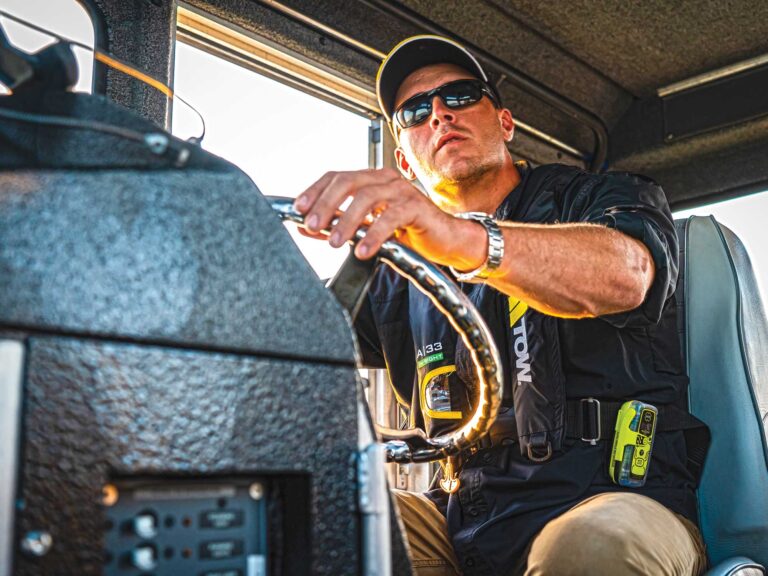Rodeo-style fishing tournaments separate the pros from the Joes. The rodeo format rewards anglers who catch a multitude of species, with points awarded for each, rather than challenging them to catch the biggest fish of a single species. To be successful, you need expertise with a variety of tackle, a comprehensive knowledge of rigs, and a “database” of fish habits and locations. Above all you need to bring all of this to bear in a single trip and make it to the weigh-in before the bell. After scoring 2nd Place in the prestigious Shinnecock Marlin and Tuna Club’s 2008 Inshore Tournament, a rodeo-style competition to benefit Schneider Children’s Hospital, I put my strategy down for all to share. In this rodeo, anglers must catch 6 species-bluefish, black sea bass, fluke, porgy (scup), striped bass, and weakfish-to win. The SMTC has over 100 members, so the competition is stiff. How did I earn my prize? Here’s a winning plan.
1. Tackle Prep: Terminal rigs for each species were tied in bulk and in advance. Doing so not only allowed my crew to get back in the action quickly after snags and bite-offs, but ensured that the switch between species took the least time possible.
2. Current Affairs: Different fish get “turned-on” at certain stages of the tide. Weakfish bite best in the two hours before and after low slack, for instance, and porgies seem to chew most as the tide reaches full high. While any fish can be caught on any tide, these historical preferences helped me schedule my attack based on the tide chart for tourney day.
3. Real Estate: Different species prefer different structure. Porgy and Sea Bass like wrecks and reefs, for instance, fluke prefer drop-offs, weakies like eel grass and stripers love rushing current where baitfish are helpless. Have an inventory of “hotspots” in mind before the starting gun.
**
**
4. Logistics: Once you’ve got the tides timed and the structure mapped, chart them against each other. For instance, in Long Island’s Peconic and Gardiners bays, where I fished, the tide floods earlier to the East. Knowing my best bet for a weakfish was closer to low water, I started to the West, caught a weak, and then headed east to where the tide was nearly full and went fluking.
5. Quality, Schmality: When the goal is to catch a variety of species, regardless of size, choose the most effective method, rather than the method that targets the bigger fish. For instance, live-baiting is a great way to catch a cow bass, but typically you don’t catch a lot of fish. So instead of swimming a live bunker, I had my crew chum with clam bellies, a technique that generally produces more fish, albeit, smaller ones. Once we had a keeper-sized linesider in the boat, we moved on to another species. Rodeo success comes to those who fish for keepers not records. Catch a legal specimen, then move on to the next fish. Leave your ego home during a rodeo.
6. Opportunity Knocks: For all the planning, prepping and mapping, fishermen know that any fish can be caught almost anywhere and almost anytime. Therefore, I kept three spinning rods rigged and ready in the rocket launcher. One sported a bucktail, the other a mid-depth swimming plug and the third a topwater popper. This strategy paid-off for me. Enroute from catching weakfish and heading for a fluke spot, a school of blues appeared on the surface. My mate, Dom Arpino, threw a popper and hooked and landed a chopper, then we were on our way. That bluefish took about five minutes out of our day. The time I had budgeted to fish at Jessups Neck (a bluefish hot spot) could now be used to target other species on our list. If we hadn’t had the rods rigged and ready-and been paying attention while traveling–we might not have landed in the money back at the dock.
7. Chill Out: Ice your catch, or better yet, keep them in a livewell. The digital scales used by tournament weighmasters these days are highly accurate. Iced or live fish hold their weight. Another team matched our catch exactly, species for species. However they stored their fish in a lightly iced cooler. I had my crew keep all of our contenders in my Regulator’s livewell. Our fluke weighed 2.7-pounds, theirs weighed 2.5 pounds. Two-tenths put us over them and in the bigger money. Were it not for the livewell, we might have tied, or worse, been relegated to third place.
You can plan and plot all you want when fishing. But since the fish aren’t in on the strategy session, luck always plays a role. But in tournament fishing, especially rodeo tournaments, luck favors the well-prepared.









